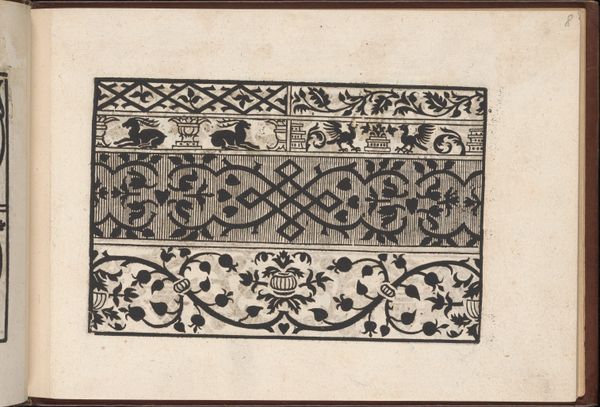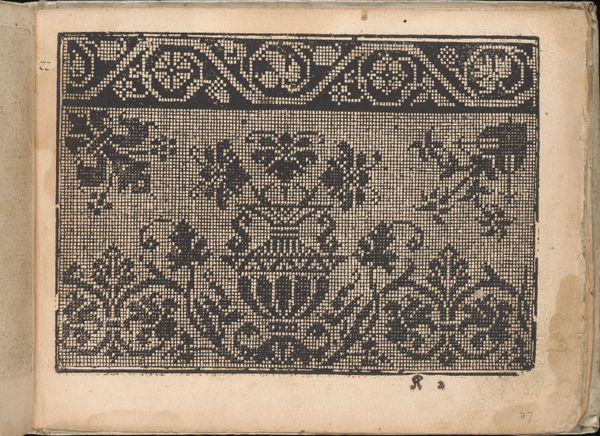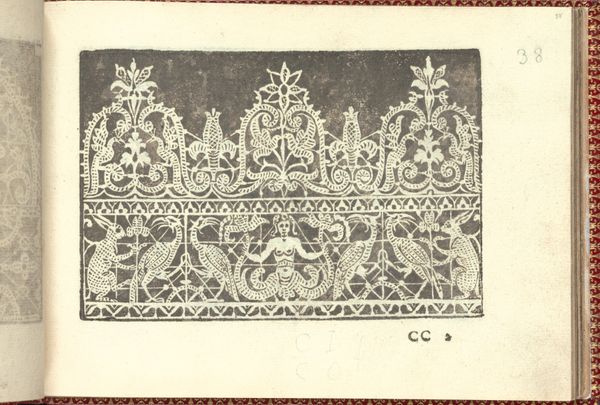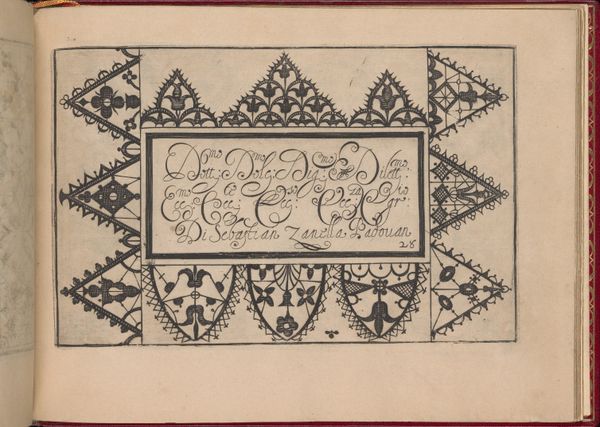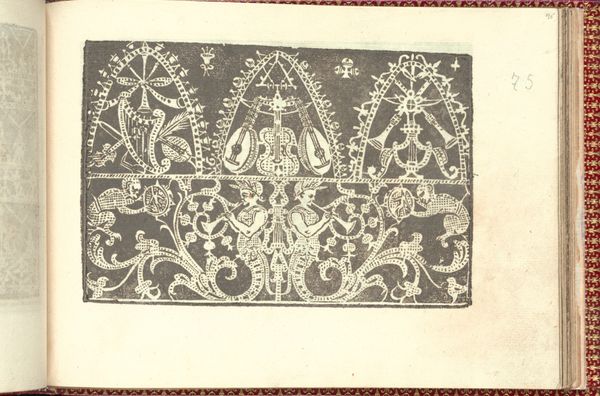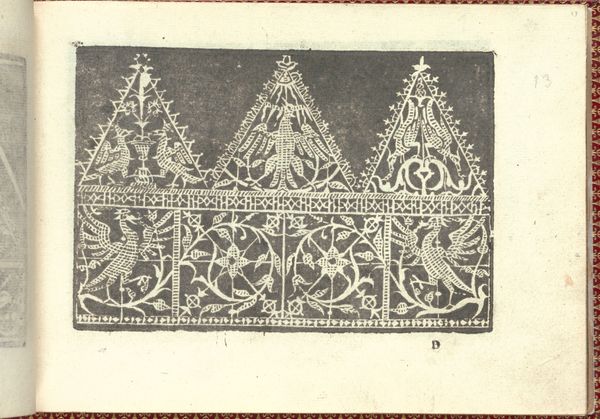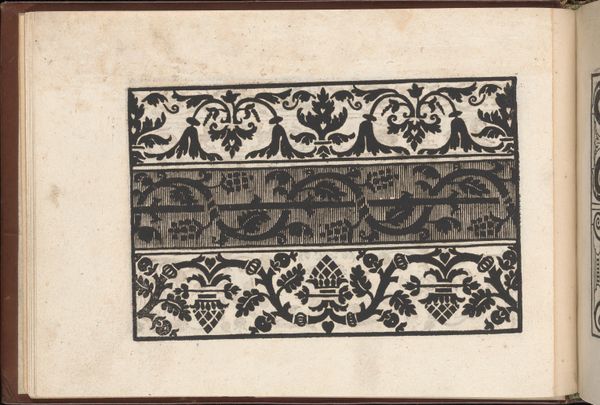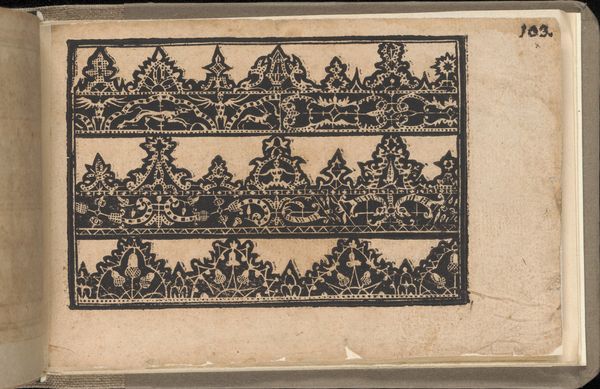
drawing, print, paper, woodcut
#
drawing
# print
#
paper
#
11_renaissance
#
woodcut
Dimensions: Overall: 6 11/16 x 9 1/16 in. (17 x 23 cm)
Copyright: Public Domain
Editor: This is "Prima parte de' fiori, page 10 (recto)", a print from 1591 by Giovanni Battista Ciotti. It's a black and white woodcut of what looks like a lace or embroidery pattern. It reminds me of a stylized border you might see in a Renaissance tapestry, or maybe on a bookbinding. What do you see in this piece? Curator: Immediately, the symmetry strikes me, yet it's not a perfect, cold symmetry. See how the elements mirror each other, but with slight variations, offering a lively contrast. Notice the recurring motifs. Floral emblems alternate with astral symbols; candle-like pillars are prominent too. What do these symbols evoke for you, particularly within the context of Renaissance artistry? Editor: Well, the floral and star-like elements feel ornamental, perhaps even aspirational. I’m unsure about the pillar elements, but their similarity to candles may represent illumination and knowledge? Curator: Indeed. These candles point towards inner illumination and spiritual insight, all popular topics at the time. Beyond their aesthetic value, remember the cultural significance of textiles in the Renaissance. These patterns provided not only decoration, but denoted status, lineage, and identity. They carried tremendous symbolic weight. Can you imagine how someone might interpret such symbolism differently depending on their social standing? Editor: Absolutely. This would’ve meant very different things to the elite versus commoners. Perhaps this page helped democratize fashion through more available prints for less wealthy tailors to study? Curator: An interesting theory. By adapting these forms for themselves, individuals could indeed partake in an established visual culture and language. Consider also the powerful combination of tradition and burgeoning print technology at play here. It signifies continuity through adaptable cultural codes. Editor: I hadn't considered the idea of textiles as a symbolic language of their own; thank you. It's made me consider art through the context of shared identity. Curator: And for me, I see here how early printmakers like Ciotti facilitated cultural continuity in uncertain times.
Comments
No comments
Be the first to comment and join the conversation on the ultimate creative platform.

